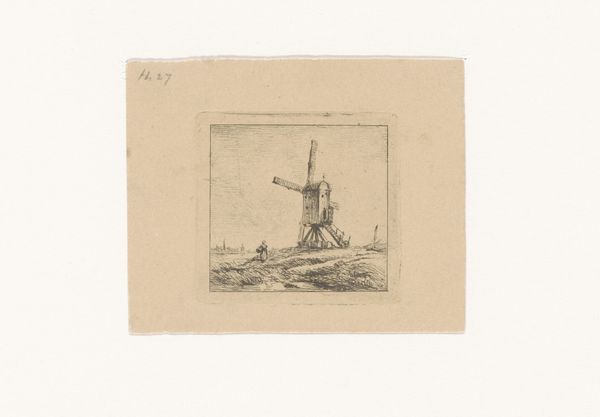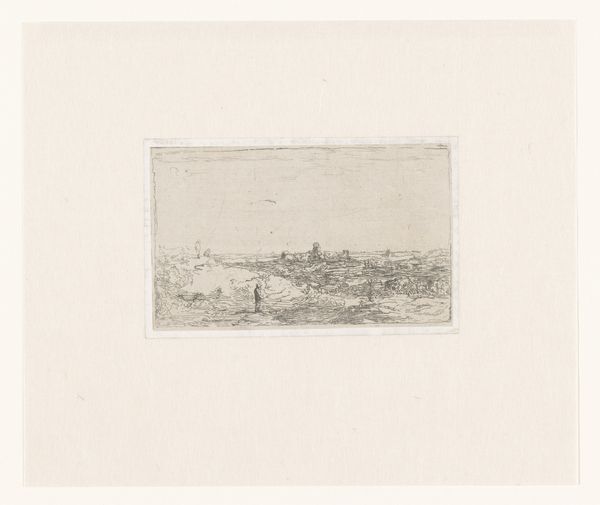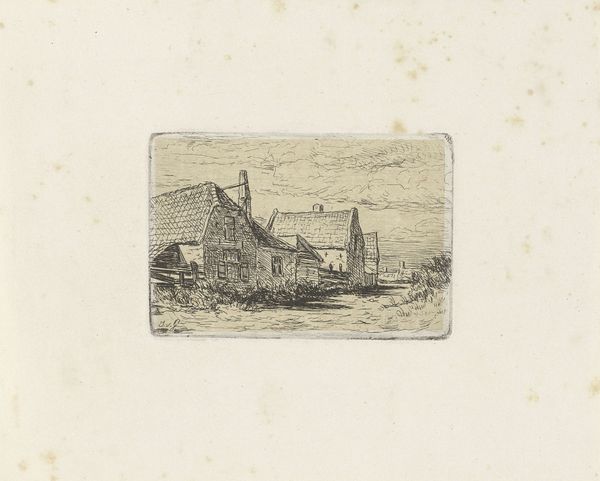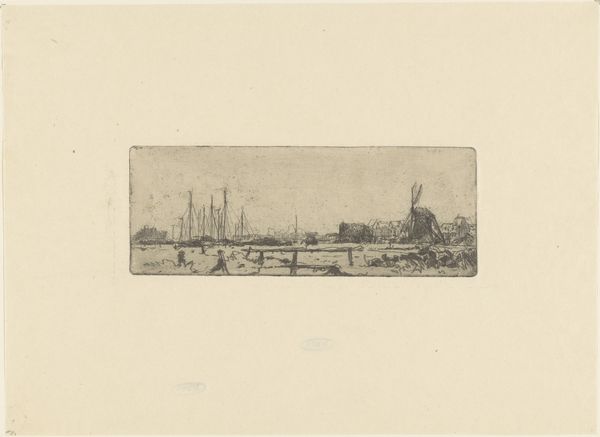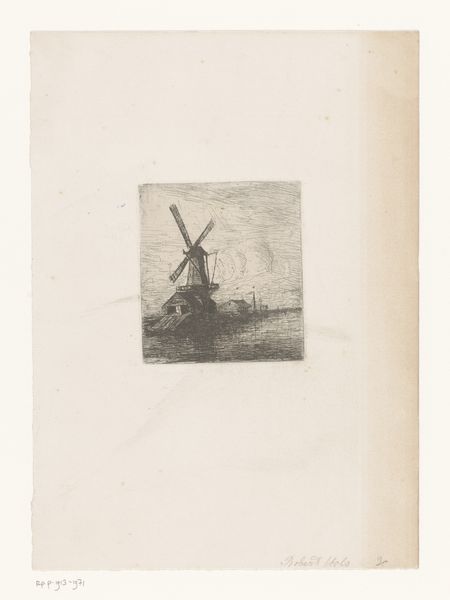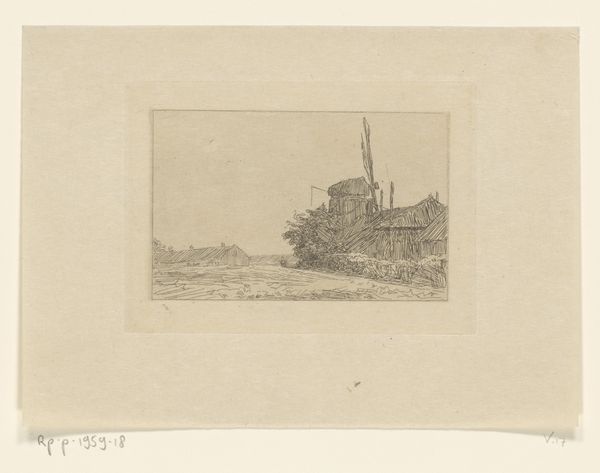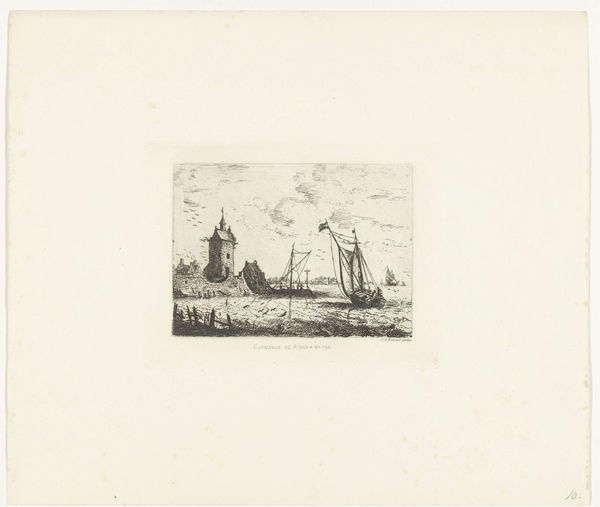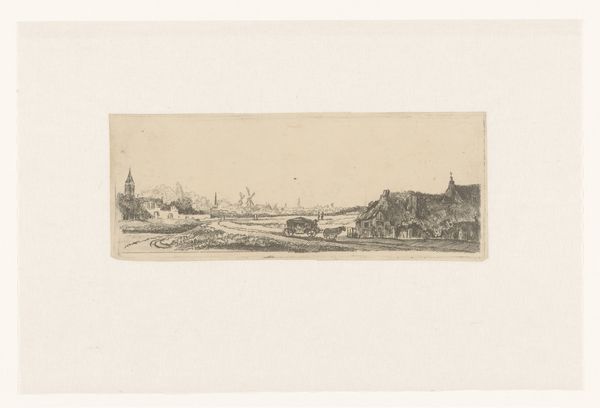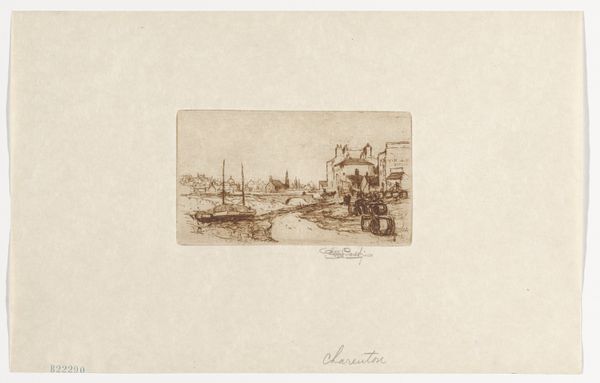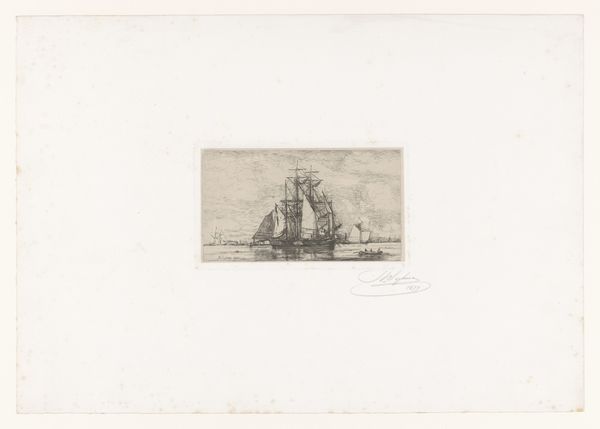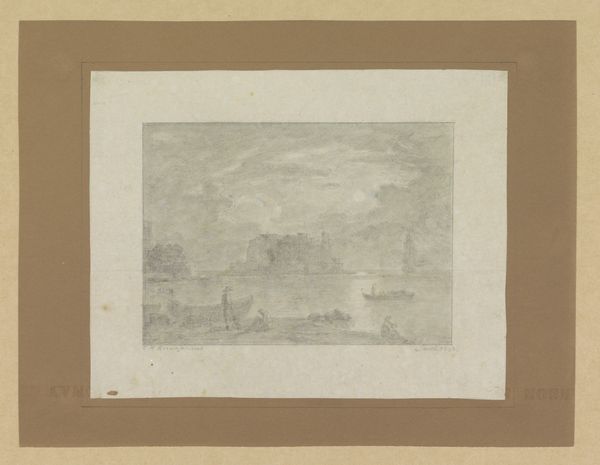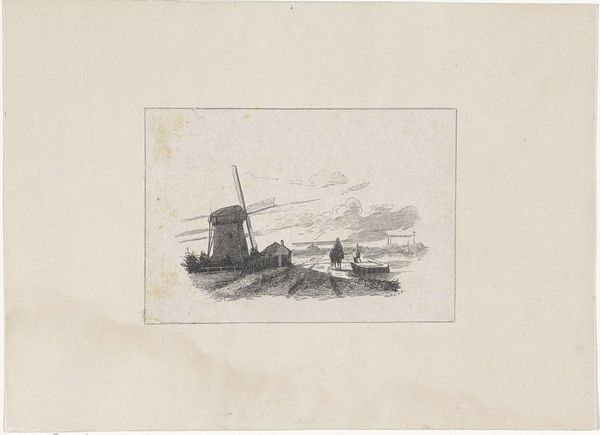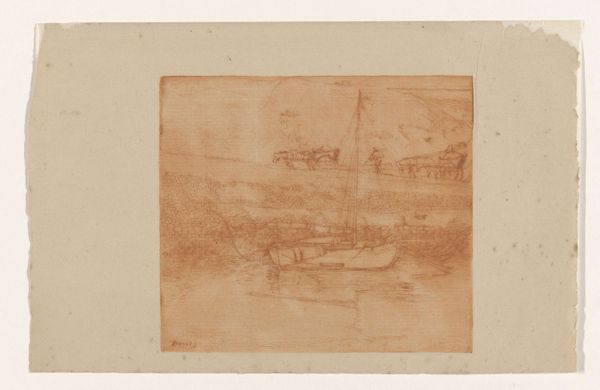
print, etching, paper
# print
#
etching
#
landscape
#
paper
#
realism
Dimensions: height 44 mm, width 55 mm
Copyright: Rijks Museum: Open Domain
Curator: Here we have "Stenen windmolen," or "Stone Windmill," an etching on paper made sometime between 1808 and 1881, credited to Eugène Verboeckhoven. Editor: It's... delicate. Almost like a faded memory. The etching is so fine, it barely registers, making the scene seem distant and dreamlike. Curator: Interesting observation. Verboeckhoven, though Belgian, engaged significantly with Dutch landscapes in his practice. He trained as an animal painter, however his detailed studies of landscape offered ways for urban audiences to appreciate a pastoral existence. The piece resonates with the 19th-century romanticization of rural labor. Editor: I am really curious about the labour surrounding this type of reproduction. Thinking about the etcher repeating imagery—I would argue its relationship to labour might have different meanings, inflecting value through distribution and access rather than pure, isolated originality. The labour of production and accessibility shift perceptions. Curator: True. And speaking of audience, remember the social implications of exhibiting and distributing these prints. Small etchings like this, reproduced and widely circulated, bring images of labor to drawing rooms far removed from the actual fields and mills, reinforcing certain ideas. Editor: Precisely, it isn't just the final print, it's also about how and where these prints are consumed. Does the fineness of the etching, the slightness of the mark making, connect to a tradition or aspiration of so-called high art print making? The landscape becomes less about the depicted countryside itself and more about claiming social status through aesthetic experience. Curator: It becomes a symbol, perhaps, more than a record. A token of refined taste, acquired and displayed, to suggest connection and sympathy. Editor: I am moved by these reproductive works in particular—by these very portable media and their complicated exchange systems. Curator: A potent reminder that the windmill represented far more than just a picturesque scene. Thank you for your insights.
Comments
No comments
Be the first to comment and join the conversation on the ultimate creative platform.
